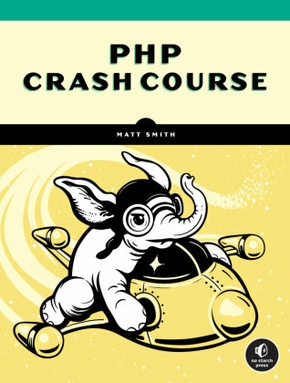| Verlag | No Starch Press |
| Auflage | 2023 |
| Seiten | 400 |
| Format | 23,4 cm |
| Artikeltyp | Englisches Buch |
| EAN | 9781718502529 |
| Bestell-Nr | 71850252UA |
Start off your web development journey the right way with this beginner-friendly introduction to PHP programming.
PHP Crash Course takes you from beginner to professional PHP programming, through hundreds of in-depth examples and hands-on exercises. You ll explore best practices for developing fast, secure, and easy-to-maintain websites, while establishing a broad foundation of programming knowledge and experience. You ll also learn how to create consistent, modern-looking web pages with easily customizable templates by combining dynamic PHP scripts, static HTML code, and Bootstrap styling; how to write scripts that can communicate with MySQL to enable data-rich web apps; and how to implement best-practice website security. As you follow along, you ll learn real-life patterns and modern programming techniques for creating, extending, and modifying web applications, all using the powerful PHP language.
Inhaltsverzeichnis:
Part 1: Fundamentals
Chapter 1: Introduction to PHP
Chapter 2: PHP Program Basics
Chapter 3: Numbers, Booleans, and NULL
Chapter 4: Working with Text Strings
Chapter 5: Making Choices
Chapter 6: Reusing Code with Functions
Part 2: Loops and Arrays
Chapter 7: Loops
Chapter 8: Simple Arrays
Chapter 9: Maps
Part 3: Websites and Form Processing
Chapter 10: Client Server Communication
Chapter 11: PHP Websites and the Built-In PHP Server
Chapter 12: HTML Forms to Send Data
Chapter 13: Processing Form Data
Chapter 14: Validating Form Data
Chapter 15: Separating Logic and Output and Adding a Front Controller
Part 4: Sessions
Chapter 16: Working with Browser Sessions
Chapter 17: Shopping Carts
Chapter 18: Sessions for Login Authentication
Part 5: Object-Oriented PHP
Chapter 19: The Basics of Object-Oriented Programming
Chapter 20: Classes and Objects
Chapter 21: Inheritance
Chapter 22: Composer, Namespaces, and A utoloading
Chapter 23: Twig Templating
Chapter 24: Object-Oriented Web Architecture
Chapter 25: Exceptions
Chapter 26: Logging
Chapter 27: Static Members
Chapter 28: Interfaces and Traits
Chapter 29: Advanced Object-Oriented Concepts
Part 6: Databases
Chapter 30: Working with Databases
Chapter 31: Databases and Objects
Chapter 32: Improving Website Security
Chapter 33: Dates and Times

